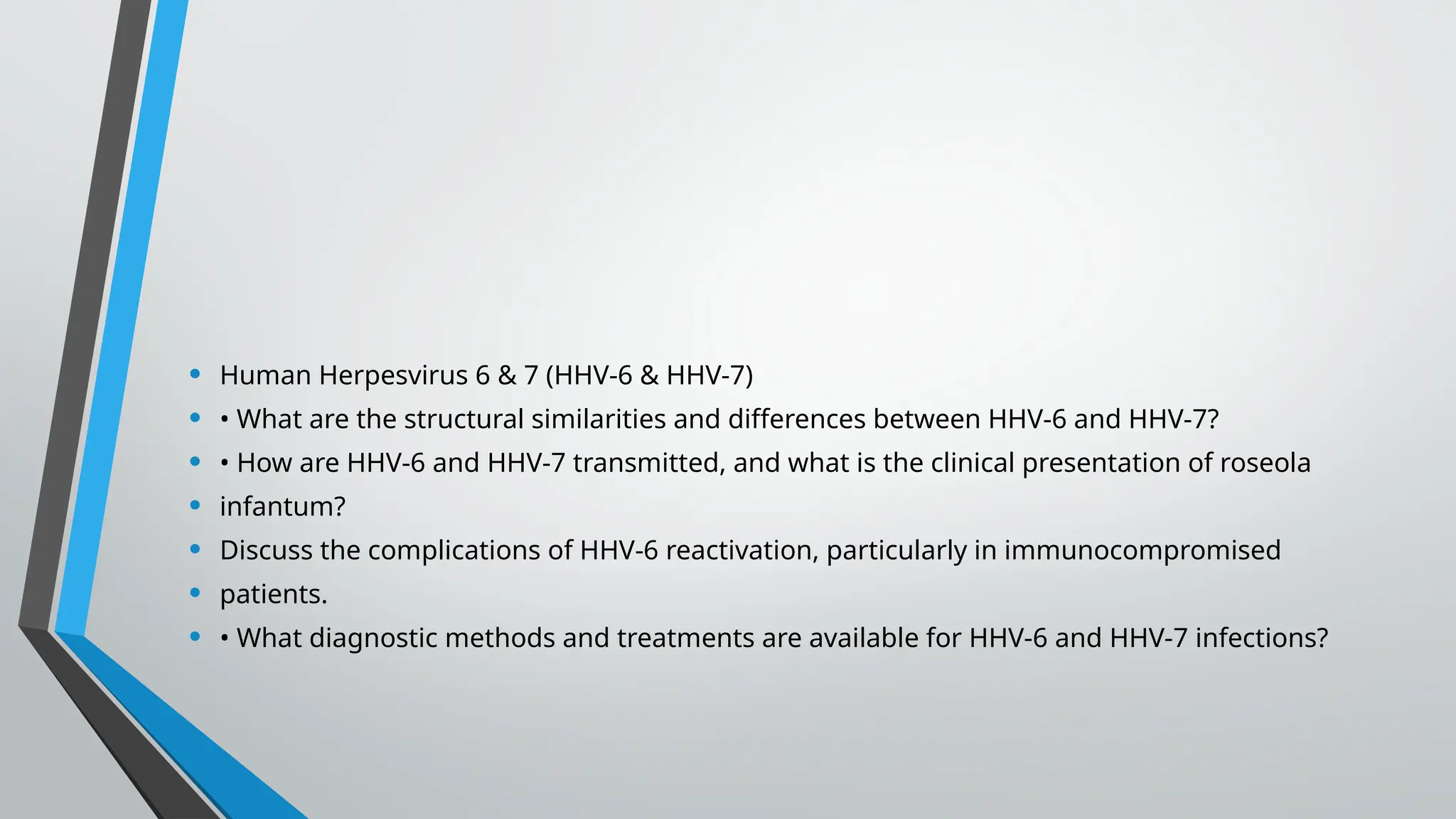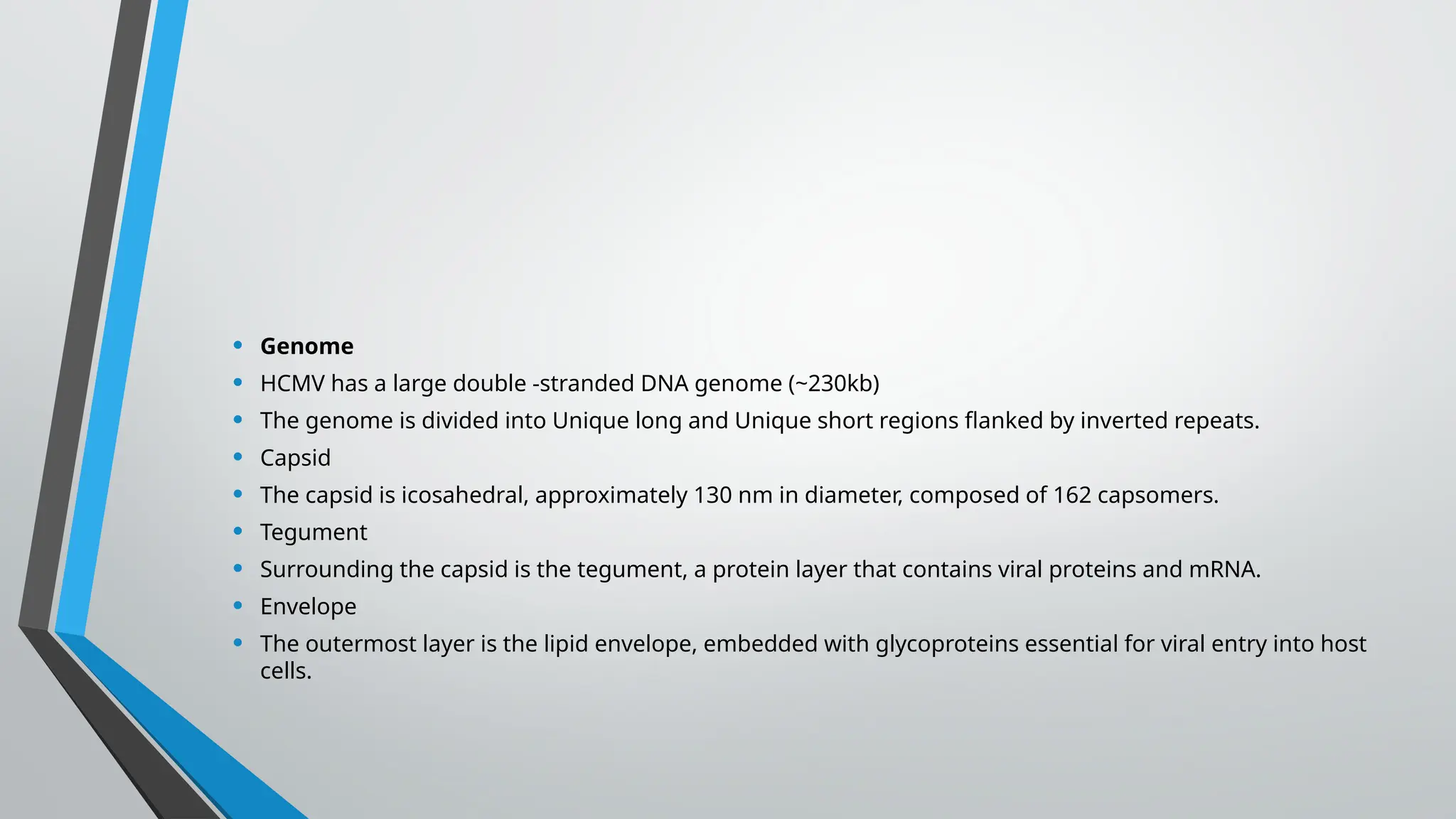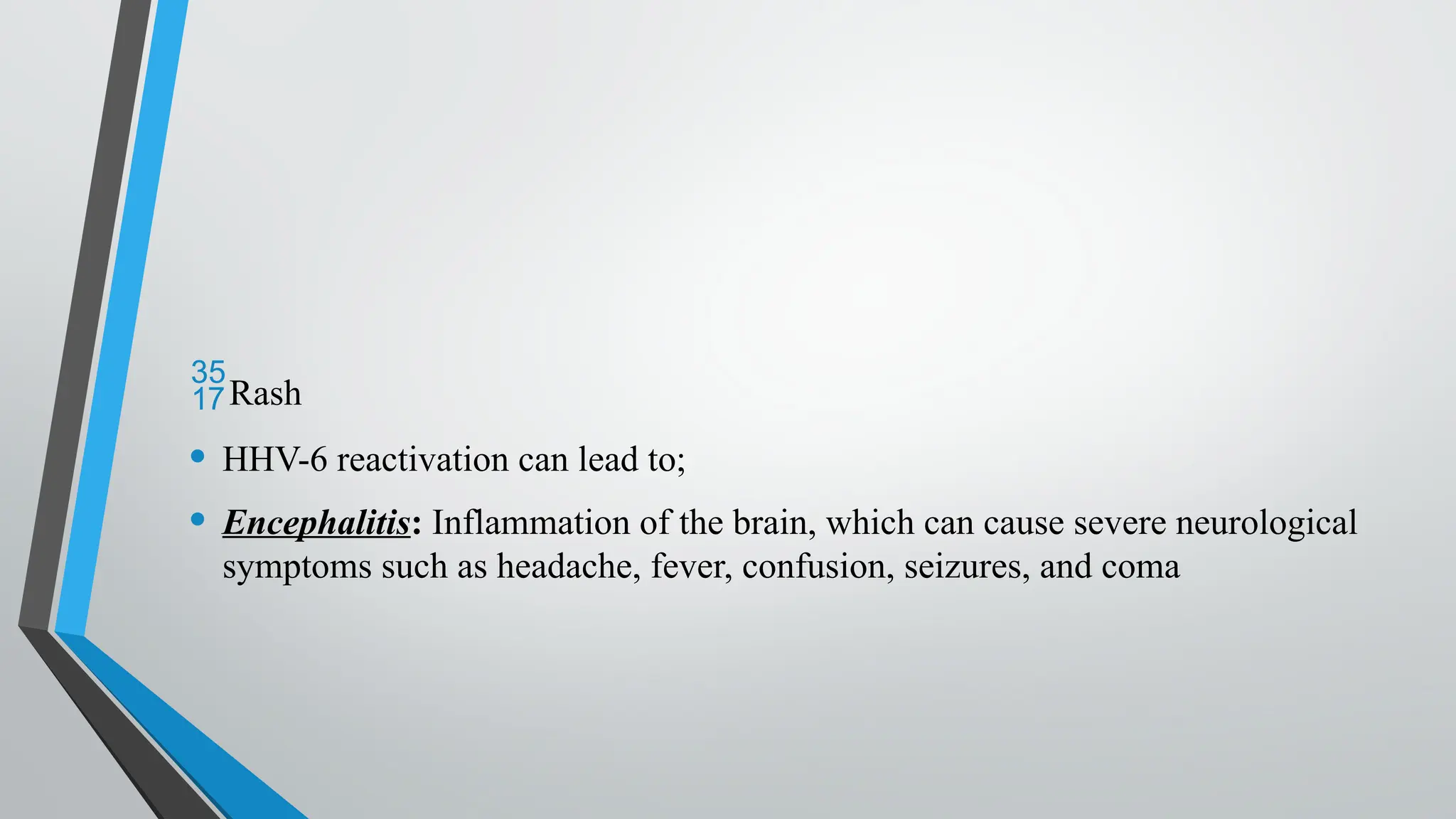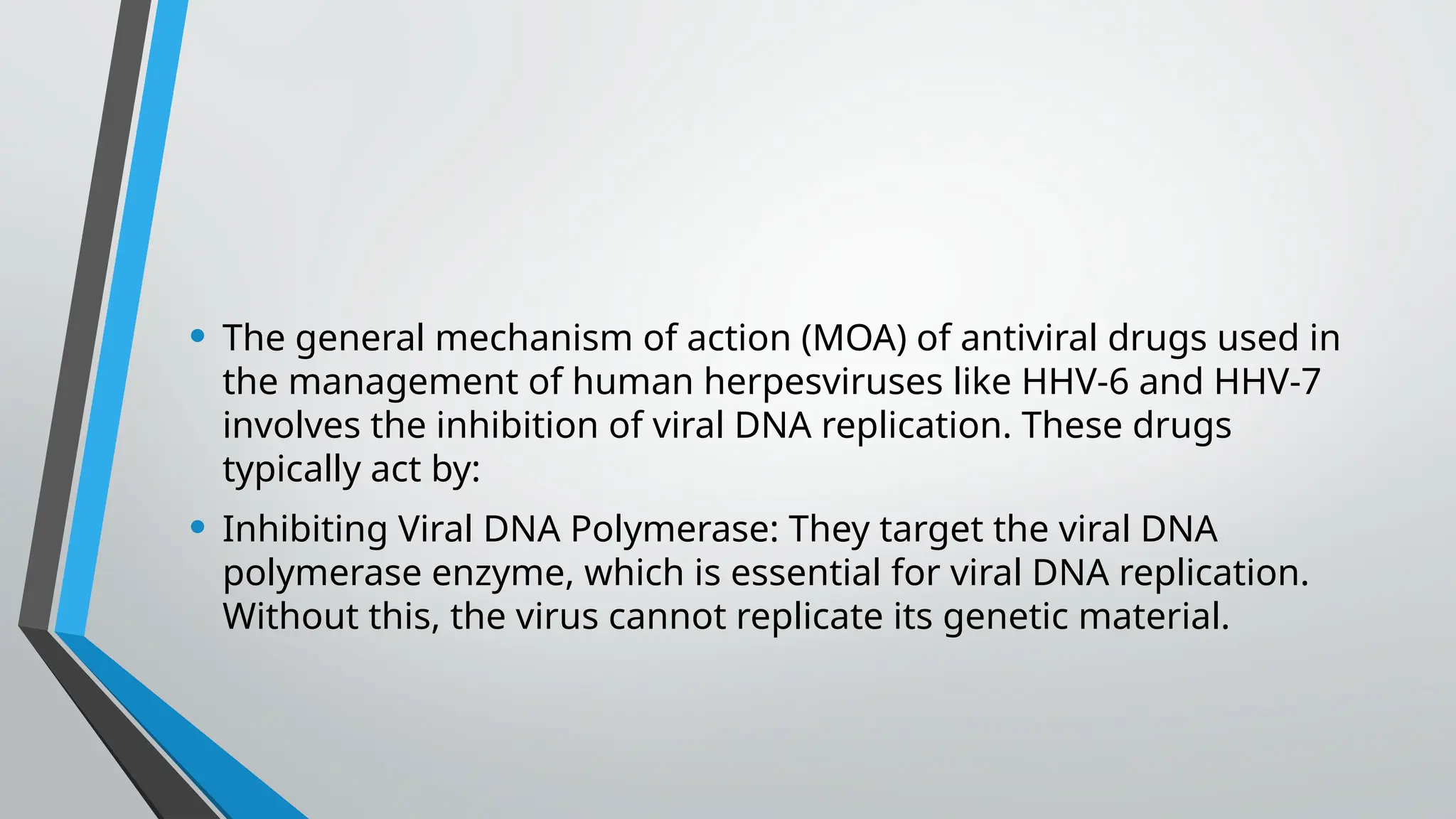The document discusses human cytomegalovirus (HCMV) and human herpesviruses 6 and 7, detailing their structures, transmission methods, clinical manifestations, and treatment options. HCMV, known for causing significant diseases in immunocompromised individuals and congenital infections, has a large double-stranded DNA genome and a complex pathogenic mechanisms. Additionally, the document covers epidemiology, diagnosis, and prevention strategies for these viruses, including the role of antiviral drugs like ganciclovir.


















































